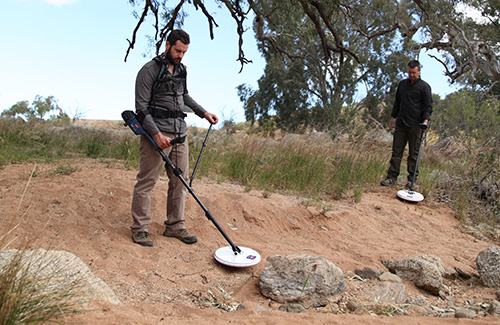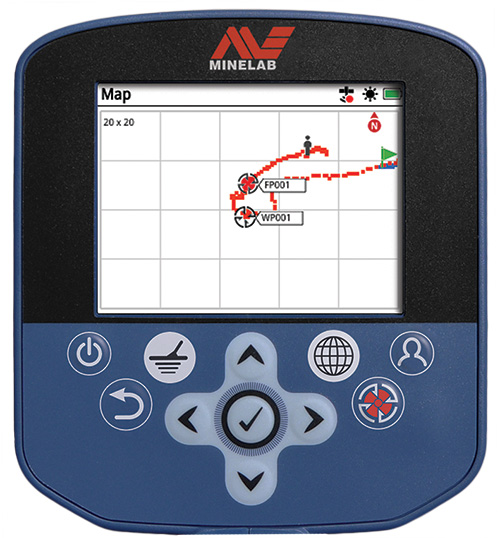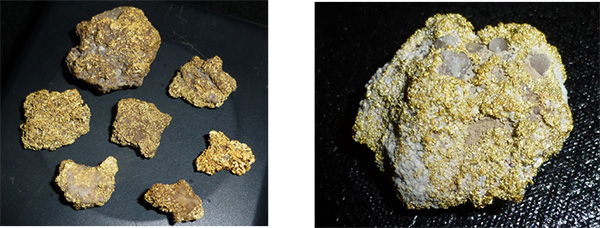After years of waiting, it is finally here, the new Minelab GPZ 7000!
Like many people I got used to Minelab introducing a new flagship gold detector every couple years. However, with the Minelab GPX 5000 I began to question just what could be done to make the detector find gold better. It appeared to me the technology had been taken as far as it could go. So much so that back in October 2012 I posted this on several Internet forums titled "Minelab CTX 5000" -
"I am a firm believer at this point that the GPX 5000 has taken PI nugget detecting technology about as far as it can go, with only better ferrous discrimination the only thing to offer me. And I am not holding my breath for that. So where to go from here? Pretty obvious I would say. Cram the GPX 5000 into the CTX 3030 package. I see no reason why it can't be done."
I based that comment on observing many people trying to turn their GPX into an integrated unit by strapping batteries and speakers onto the housing. People were craving a pick up and go all in one unit that eliminated cords and cables. I had a new CTX 3030 and really liked its design.
I was therefore not very surprised, and of course pleased, when I first saw the GPZ 7000. The robust weatherproof design with integrated batteries and wireless audio offers the possibility of detecting free of cords and cables. The reality is that for some people or for long hours this may not be practical for everyone due to the weight and so Minelab is including a deluxe harness system and swing arm helper handle. These aids combined with the near perfect balance of the GPZ 7000 will enable the long hours, days, or weeks of detecting that prospectors must endure.

I have to admit I had never used the integrated GPS included in my CTX 3030 but I became entranced with the same feature on the GPZ 7000. What seems like an overkill feature for small city parks becomes an essential aid in prospecting wide open spaces. I soon found making a habit of always using the tracking function and logging finds into the system quickly builds useful information. It becomes easy to see where small areas have been overlooked or missed and patterns emerge in mapped nugget finds.
I could of course use a separate GPS for these functions but having it front and center on screen simply is more efficient in actual use. The tracking screen is my hunt screen on the GPZ 7000. I basically just try and make sure I cover every square inch of ground by filling in every pixel on the map screen as I search for gold. Logging nugget finds with weights as I find them rapidly builds an on-screen picture of a gold patch and its possible extensions.

The wireless module is just fantastic. The built in speaker allows me to mount the module on my left shoulder under my left ear. That is the ear that still works pretty well! It is even be possible to pair a second module (not included) to run twin external speakers, one on each shoulder. The other option of course is to plug either the included Koss headphones or my favorite aftermarket headphones into the module. In the event the module battery runs dead I can always plug directly into the detector.
The GPZ 7000 battery is larger and has more capacity than my CTX 3030 battery but there is a real bonus in owning both detectors in that the batteries work on both detectors. This means that I already own a decent second backup battery for my GPZ 7000 in case I run a little short in an extra long day. However, the high capacity GPZ 7000 battery should be sufficient for normal use for most people in all but extra long days.
By now you must be wondering "what the heck Steve, tell us about the gold!" As a veteran of decades in the metal detector industry I am very familiar with one thing. That is the hope that each new detector will somehow magically find gold in large quantities quickly and easily compared to whatever is already available. I have explained how I thought the existing technology was already maxed out, so when I heard the GPZ 7000 had something really new and different inside, I was of course hoping it would make dead gold patches become alive again with new finds.
I am not going to claim to be an expert in all things GPZ 7000 already. However, I do believe I have found the key to success with this new detector. Yes, it absolutely has a technological advantage over existing prospecting detectors. Minelab has exceeded my expectations there without a doubt since all I really was hoping for was just GPX 5000 performance in a different package. However, the GPZ 7000 cannot make gold appear where it no longer exists, and this can lead to unexpected results in some locations.
My friend Chris Ralph and I did just what I expect most people are going to do. We ran straight to known locations that once produced a lot of gold, in hopes that the GPZ 7000 will make these locations come alive again with gold finds. What we discovered is that this is a very good strategy, but that it can have mixed results.
The secret is simply this. The locations must have something about it that has prevented all previous technology from completely working out all the gold. If the patch has shallow bedrock, and the gold found there was relatively solid and high purity, then chances are prior prospectors with existing technology have already cleaned out most of the gold. This is particularly true of locations with moderate to low mineralization levels.
So think about it. Is that patch you are thinking about a place where bedrock is at or nearly on the surface and the ground mineralization easy to deal with? Then the reality is that if it has been easily accessible to the general prospecting public for decades with the best detectors then the GPZ 7000 is unlikely to find much in the way of new gold. A Minelab GPX 5000 in competent hands is a formidable combination, and they leave little gold behind at some locations.
I think we can however consider it a proven fact that the Minelab SDC 2300 can go back to locations well hunted by the GPX 5000 and still find gold in some locations. The GPZ 7000 shares and exceeds the SDC ability to hit extremely small gold in highly mineralized ground. It excels on specimen type gold dispersed in rock, sponge gold, and wiry gold. Low purity low conductive gold also responds better on the GPZ 7000.
The GPZ, across the board, has the ability to better handle and eliminate the ground signals that hide gold nuggets from prospectors, especially large deep nuggets but gold of all sizes. This ability will of course not be much of an advantage in low mineral locations that are favorable to other detectors. The GPZ 7000 is going to shine best in very difficult ground.
Therefore I can predict what we are going to see on the Internet soon. There will be people that take a new GPZ 7000 to locations where previous detectors have all the power needed to clean out the ground. They will probably be disappointed that the GPZ 7000 cannot find gold where there no longer is gold to find.
Those however that think about and seek out locations where other detectors are more likely to have left gold behind are going to do well and there will even be quite spectacular results. I was able to take the GPZ 7000 to an old patch previously hunted by many people with many detectors. I had hunted the location myself just a year earlier with my GPX 5000 and a very hot VLF detector and was only able to find a couple small specimens. The GPZ 7000 made this location light up like it had never been hunted, with strong solid signals on gold I know I had been over. I may miss a nugget now and then but I do not miss a handful in a small area.

The previous detectors simply could not see the gold. It is delicate specimen gold in quartz and practically invisible to most detectors plus the ground has enough depth to it to put the remaining gold out of reach. The GPZ 7000 found this gold and found it with very strong signals. This was not eking out bare whisper targets; these were just like targets found on a virgin patch. Except that it was not.

To sum up the GPZ 7000 does actually represent the next step in nugget detector technology.The key to success is to realize that not all patches have gold left in them. Many are pretty well cleaned out. The key to success with the GPZ 7000 on old patches is to seek out ones with specimen type gold and those locations with some depth and difficult mineralization. Follow this advice, and you have a very good chance of seeing the spectacular results I saw where you cannot believe what you missed before. Good luck!




















Comments
To make comments you must be logged in, please note comments will not display immediately due to moderation